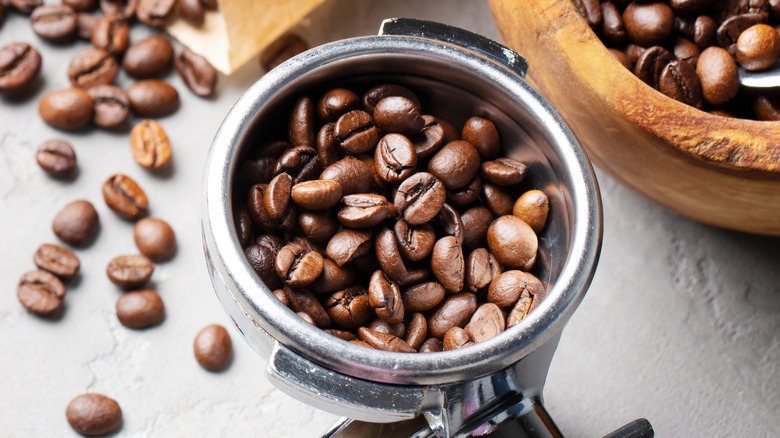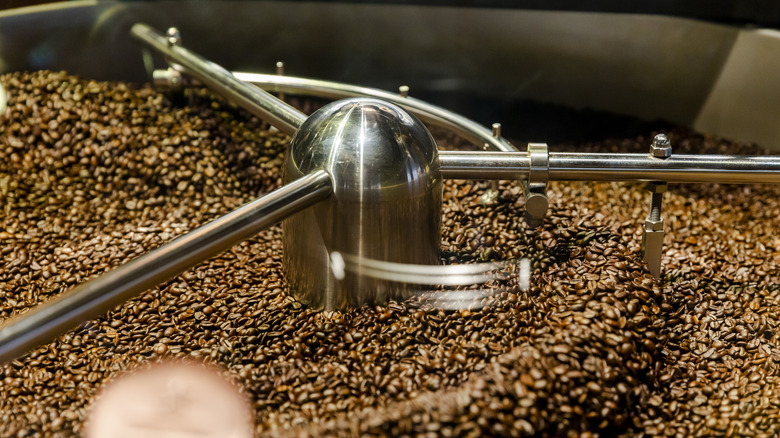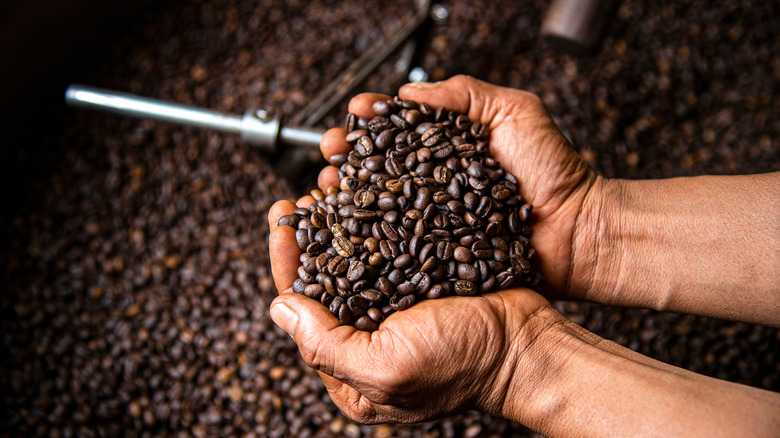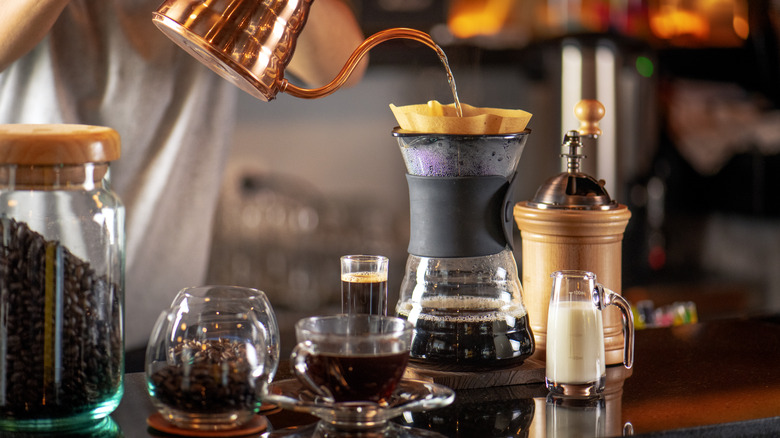Look For This Date When Buying Your Next Bag Of Coffee Beans
It's no secret that whole coffee beans are better than pre-ground when scooping up a bag to take home. You'll rarely know when pre-ground beans were sent through a grinder or which processes were employed to get large batches of beans into countless bags for mass consumption. Buying whole beans and grinding them yourself is a given for the freshest cup of java, but there's more to it than that. That bag destined for your home kitchen harbors some secrets, ones that should reveal themselves on the packaging — and those secrets have fresh stories to tell.
Most consumable packaged goods come with a "Best if used by" date, giving a heads-up on how long they'll be at peak performance for flavor and quality, the USDA explains. Except for infant formula, the dates for products don't refer to safety but to quality, meaning they could still be safe for consumption after the best-by date if handled properly. Bags of coffee typically follow this accepted practice of including best-by dates, but it's one of the few consumables that goes a bit further. For coffee lovers in the know, a second date on that bag is even more important.
It's all about the roasting
We would all love to start our days with a barista-born cup of latte art, submerged in the coffee culture at our favorite local brew spot. However, the reality is that most mornings begin with pushing a button or pressing a grinder to produce java on the go from our own kitchens. Still, that doesn't mean we have to settle for mediocrity in a cup. Thanks to a simple date stamped on a bag of roasted coffee beans, we can gauge the ultimate time frame for getting the richest, freshest coffee flavor — and it's not the best-by, sell-by, use-by, or freeze-by dates most commonly used by commercial food packagers. The date you want to view is the roast date, according to Bean Ground.
Though certainly not required by law, providing a roasting date is a courtesy often extended by conscientious coffee purveyors, whether they use large roasting companies or small-batch artisan roasters. It reveals the date that the whole coffee beans went through the roasting process prior to being bagged and transported near or far. Check all sides of the bag and even on the bottom to find the roast date, which might accompany a standard best-by date.
The sweet spot post-grinding
If the bag doesn't include a roast date, you might want to choose a different brand — that's how important it is. Roasting a coffee bean starts the process of "degassing" through the release of carbon dioxide remaining in the cells of the bean after they're roasted, explains Clive Coffee. The release occurs over time, as well as when water hits the ground beans. As the coffee ages, more gas gets released, affecting the flavor, crema, and brew times. The bottom line is that you'll taste the difference in your cup.
Most coffee professionals recommend purchasing coffee beans within 7 to 14 days of the time it leaves the roaster, not sooner. That said, there is such a thing as "too fresh," notes Bean Ground, because beans need to rest during the first few days after roasting when the CO2 release is at its strongest. Otherwise, degassing can prevent proper flavor extraction when the beans are brewed.
A nuanced approach
The peak performance time for coffee is subjective depending on the quality of the beans and the roasting techniques employed by individual roasting companies. Nuances can be subtle but have a big impact on the profile of the coffee and how well it ages and peaks. The general rule of consuming within 14 days for the best flavor can vary, with some roasted beans reaching ultimate performance closer to 30 days, as explained by Perfect Daily Grind. Experimentation is key, so you may need to try out several coffee brands at varying roast dates to find what fills your cup with java joy.
There will inevitably be times when a bag of coffee beans sits unused for longer than the overall recommended seven to 14 days past the roasting date. Unless you're an absolute coffee purist, it's perfectly fine to use those beans, especially when employing a few tricks to maximize the remaining flavor. In a YouTube video, Clive Coffee recommends keeping older beans in an airtight container and using a finer grind so that the hot water can more easily extract flavor from the beans.



